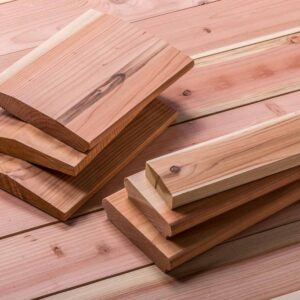Redwood Lumber for sale
Redwood Lumber for Sale: A Comprehensive Guide
Redwood Lumber for sale, Redwood lumber has long been a prized material for construction, landscaping, and woodworking. Known for its durability, resistance to decay, and stunning aesthetic appeal, redwood remains a favorite choice among builders and homeowners. If you are considering purchasing redwood lumber, this guide will provide you with all the essential information about its types, uses, sourcing, pricing, and care.
What is Redwood Lumber?
Redwood lumber comes from the redwood trees, primarily the Sequoia sempervirens (coastal redwood) and Sequoiadendron giganteum (giant redwood). These trees are native to the coastal regions of Northern California and parts of Oregon. The wood is valued for its reddish-brown color, straight grain, and unique characteristics, including:
- Durability: Naturally resistant to decay and insects.
- Workability: Easy to cut, shape, and sand.
- Aesthetic Appeal: Its natural tones and grains add beauty to any project.
- Environmental Benefits: Redwood forests are managed sustainably, and redwood is often sourced from certified operations.
Types of Redwood Lumber
1. Construction Heart Redwood
This grade is highly durable and primarily used for structural applications such as decking, fencing, and outdoor furniture. It contains a high percentage of heartwood, which is the most resistant to decay.
2. Clear Redwood
Clear redwood is virtually free of knots and blemishes, making it ideal for applications where aesthetics are paramount, such as paneling, cabinetry, and trim work.
3. B Grade Redwood
This grade has minor imperfections, making it a cost-effective option for projects requiring visual appeal without the premium price of clear redwood.
4. Construction Common Redwood
This is a more affordable grade suitable for general construction projects. It may have more knots and imperfections but retains redwood’s durability and strength.
5. Heartwood vs. Sapwood
Heartwood redwood is darker, denser, and more durable, while sapwood is lighter and less resistant to decay. Heartwood is preferred for outdoor and structural uses, whereas sapwood is suitable for interior applications.
Uses of Redwood Lumber
Redwood’s versatility allows it to be used in various applications:
- Decking: Its resistance to moisture and rot makes it a top choice for outdoor decks.
- Fencing: Provides a natural, rustic look while ensuring longevity.
- Siding: Lightweight and visually appealing for exterior walls.
- Furniture: Perfect for crafting elegant and durable indoor and outdoor furniture.
- Pergolas and Gazebos: Ideal for creating shaded outdoor spaces with a touch of elegance.
- Planter Boxes: Redwood’s natural resistance to rot makes it excellent for garden beds.
Where to Buy Redwood Lumber
1. Local Lumberyards
Many local lumberyards stock redwood. Visiting in person allows you to inspect the quality of the wood before purchase.
2. Specialty Suppliers
Suppliers specializing in redwood often offer a broader range of grades and sizes. Examples include:
- Humboldt Redwood Company
- Mendocino Forest Products
3. Online Retailers
Websites like Redwood Outlet and Woodworker’s Source allow you to browse and order redwood lumber online, often providing detailed descriptions of each product.
4. Big-Box Retailers
Stores like Home Depot and Lowe’s sometimes stock redwood lumber, although their selection might be limited compared to specialty suppliers.
5. Reclaimed Redwood
Reclaimed wood suppliers offer redwood salvaged from old structures, providing an eco-friendly option.
Pricing of Redwood Lumber
The cost of redwood lumber varies depending on factors like grade, size, and availability. Here’s a general overview:
- Construction Common: $2.50 – $5.00 per board foot
- B Grade: $5.00 – $8.00 per board foot
- Clear Redwood: $8.00 – $15.00 per board foot
- Reclaimed Redwood: Prices vary widely, often $10.00+ per board foot
Factors influencing pricing include:
- Seasonal Demand: Prices may rise during peak construction seasons.
- Location: Proximity to redwood-growing regions affects transportation costs.
- Sustainability Certifications: Certified sustainable wood might have a premium price tag.
Sustainability and Redwood Lumber
Sustainable forestry practices are essential for preserving redwood forests. Look for certifications like FSC (Forest Stewardship Council) or SFI (Sustainable Forestry Initiative) to ensure your lumber comes from responsibly managed sources. Many suppliers actively participate in reforestation programs and adhere to strict environmental standards.
How to Care for Redwood Lumber
Outdoor Applications
- Sealing and Staining: Apply a protective sealant or stain to enhance its lifespan and maintain color.
- Cleaning: Use a mild soap and water solution to clean dirt and debris.
- Regular Maintenance: Inspect and reapply finishes every 2-3 years.
Indoor Applications
- Dusting: Regularly dust with a soft cloth to keep surfaces clean.
- Polishing: Use wood polish to maintain its natural sheen.
- Avoid Moisture: Prevent prolonged exposure to water to avoid warping.
Benefits of Using Redwood Lumber
- Longevity: With proper care, redwood structures can last decades.
- Natural Beauty: Adds a timeless aesthetic to any project.
- Eco-Friendly: Sustainably sourced redwood contributes to environmental conservation.
- Lightweight Yet Strong: Easy to handle and install without compromising durability.
- Fire Resistance: Redwood’s dense structure provides a natural level of fire resistance.
FAQs about Redwood Lumber
1. Is redwood lumber good for decking?
Yes, redwood lumber is an excellent choice for decking due to its natural resistance to rot, moisture, and insects.
2. Can redwood be stained or painted?
Absolutely. Redwood accepts stains and paints well, allowing you to customize its appearance while adding a layer of protection.
3. How long does redwood last outdoors?
With proper care, redwood can last 20-30 years or more in outdoor settings.
4. Is redwood lumber expensive?
While redwood is generally more expensive than other types of wood, its durability and aesthetic qualities make it a worthwhile investment.
5. What is the difference between redwood and cedar?
Both are durable and visually appealing, but redwood is generally denser and has a richer color, while cedar is lighter and offers a more subtle aroma.
Showing the single result
